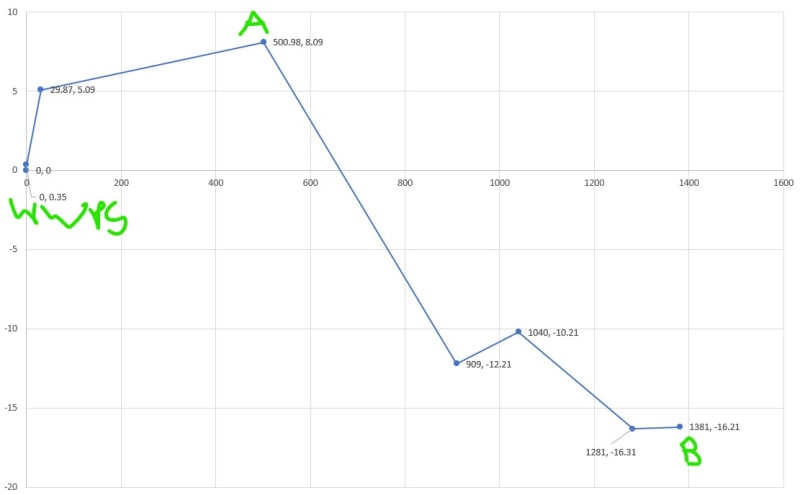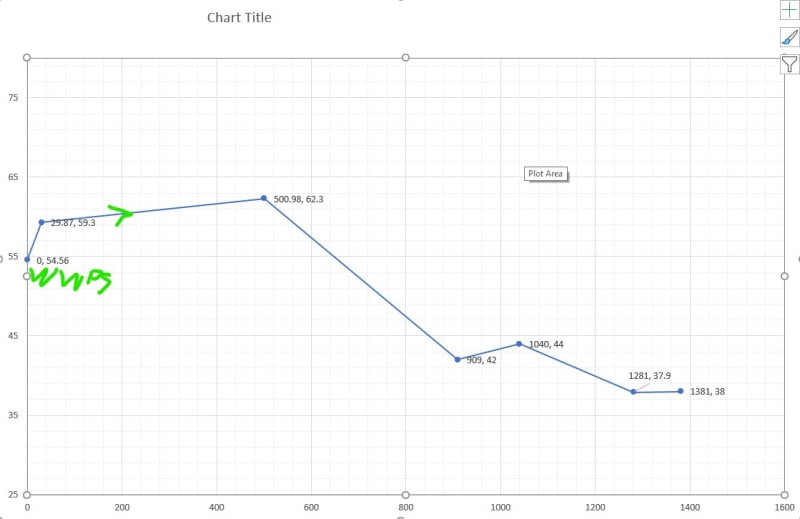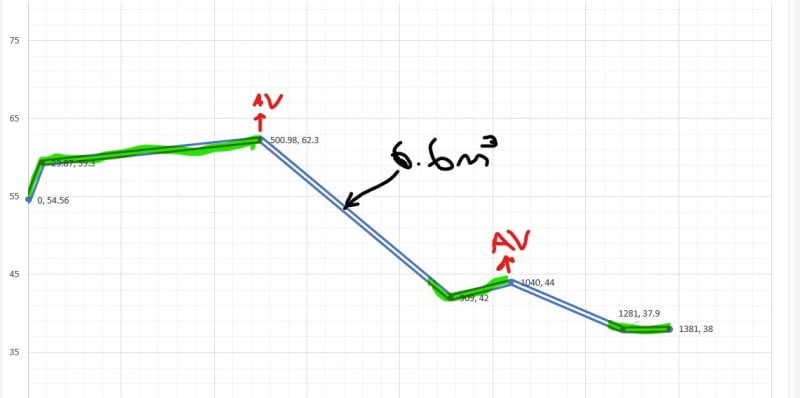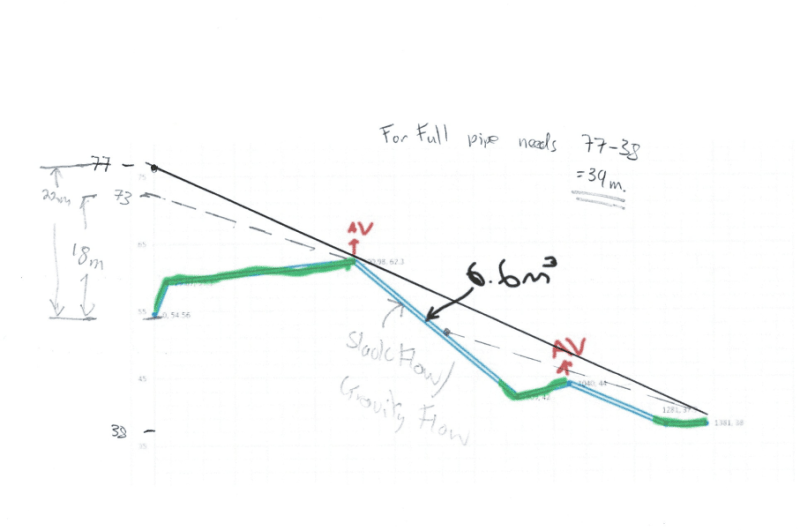I am looking at a project that involves a wastewater pump station. The initial design pumped to the crest of a hill and then gravity flow to another WWPS. this existing WWPS pumps a short distance uphill and discharges into the gravity network. The existing WWPS is much smaller than the one we are designing so will ultimately require a complete upgrade which is one of the reasons i am looking into pumping the full length to the same discharge manhole (bypassing the second pumpstation)
Another reason is that once we have dropped down the main hill there is a second small hill so the gravity network ends up being fairly deep so by pumping we can go with minimum cover.
The crest is at chainage 500 with a static head of 7.8m and the full system (pipe length) is 1381m with a static head of -16.6m
For the pipe size i have selected (v=1.4m/s) the total dynamic head is 22.5m and 24.02m
I know that the selected pump needs to initially lift over the high point and still operate when the full pipe is charged.
We will have air valves and scour valves at the high and low points so we will not be creating a siphon when the pump switches off
What are the requirements to know if once the first duty point is met the pump will be able to fill the downhill portion of the pipe and create a charged pipe?
Having researched it i believe that if the system curve for the initial high point meets the pump curve at a higher flow rate than the full system curve / pump curve intersection then the pipe will eventually fill, and then the pipe friction will force the duty point to move from the crest to the full (does that sound right?)
Another reason is that once we have dropped down the main hill there is a second small hill so the gravity network ends up being fairly deep so by pumping we can go with minimum cover.
The crest is at chainage 500 with a static head of 7.8m and the full system (pipe length) is 1381m with a static head of -16.6m
For the pipe size i have selected (v=1.4m/s) the total dynamic head is 22.5m and 24.02m
I know that the selected pump needs to initially lift over the high point and still operate when the full pipe is charged.
We will have air valves and scour valves at the high and low points so we will not be creating a siphon when the pump switches off
What are the requirements to know if once the first duty point is met the pump will be able to fill the downhill portion of the pipe and create a charged pipe?
Having researched it i believe that if the system curve for the initial high point meets the pump curve at a higher flow rate than the full system curve / pump curve intersection then the pipe will eventually fill, and then the pipe friction will force the duty point to move from the crest to the full (does that sound right?)




